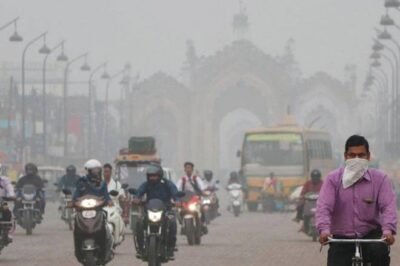
In a concerning revelation by the World Air Quality Report 2023, Delhi has been recognized as the world’s most polluted capital city, marking a dire state of air quality in India. This report, published by the Swiss organization IQAir, also placed India as the third country with the worst air quality, following closely behind Bangladesh and Pakistan.
Bihar’s Begusarai emerged as the global leader in pollution among metropolitan areas, a significant jump from its previous absence in the rankings. With an average PM2.5 concentration of 118.9 micrograms per cubic meter, it surpassed all other cities in terms of air pollution levels. Meanwhile, Delhi experienced a deterioration in air quality, with PM2.5 levels increasing from 89.1 to 92.7 micrograms per cubic meter from 2022 to 2023.
This report draws on data from over 30,000 air quality monitoring stations worldwide, indicating a grim scenario where approximately 1.36 billion Indians are exposed to PM2.5 concentrations far exceeding the World Health Organization’s (WHO) guideline of 5 micrograms per cubic meter. Furthermore, nearly 96% of the population faces PM2.5 levels more than seven times above the WHO’s recommended annual guideline.
The extensive data collection from a variety of sources including governmental bodies, research institutions, and citizen scientists has expanded to encompass 7,812 locations across 134 countries in 2023. The alarming statistics underscore air pollution as the foremost environmental threat to human health, contributing to an estimated one in nine deaths globally.
With air pollution being linked to a myriad of health issues ranging from asthma and cancer to stroke and lung diseases, the need for urgent action to combat this crisis is more critical than ever. Additionally, the adverse effects of PM2.5 pollution on cognitive development in children and its potential to exacerbate mental health issues and complicate existing conditions such as diabetes highlight the far-reaching impacts of air pollution on public health.









































Leave a Reply